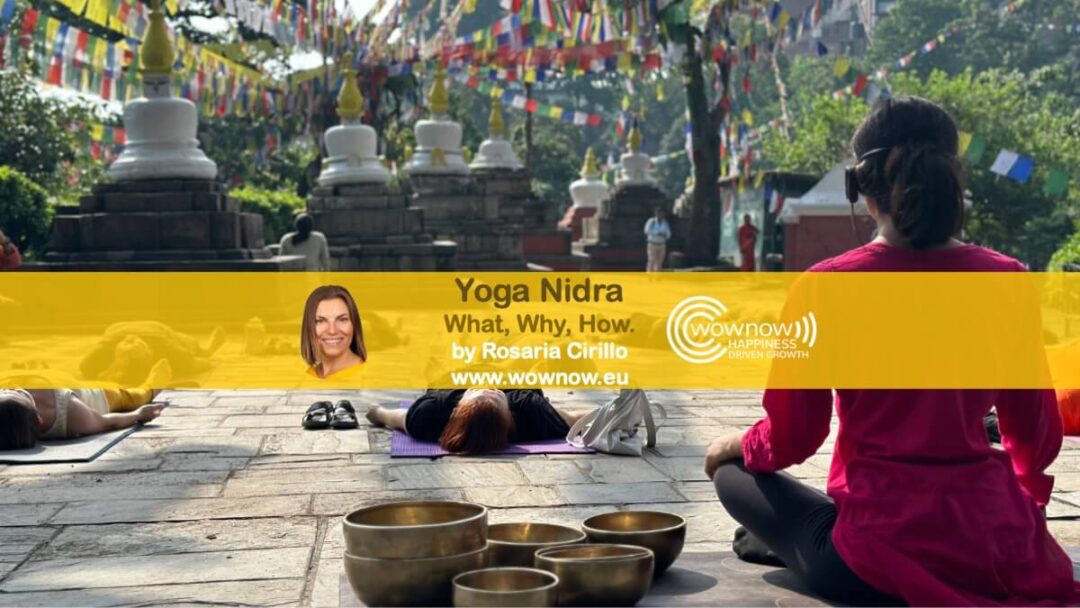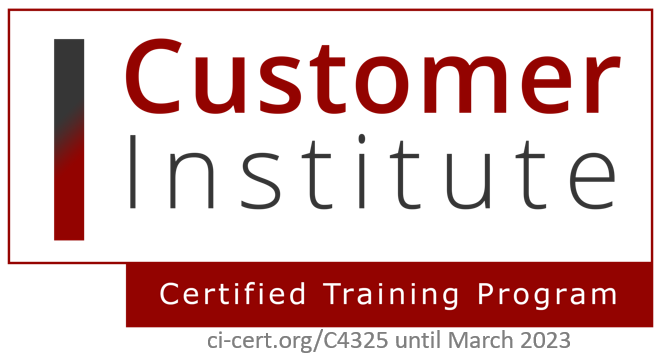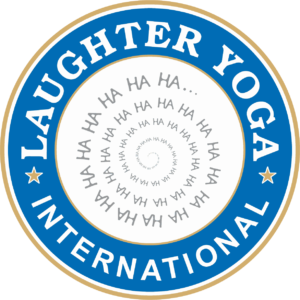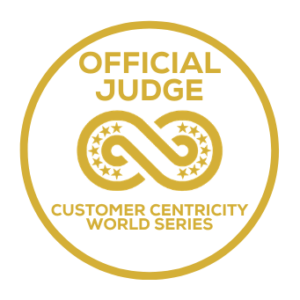- Yoga Nidra. Happiness Contribution Show: Episode 24 Insight.
- My journey to discover Yoga Nidra
- Why: The Benefits of Yoga Nidra
- A poem: Yoga Nidra – The Blissful Relaxation
- How: The Practice of Yoga Nidra
- Yoga Nidra. Happiness Contribution Show: Episode 25 Practice.
- Next steps to bring more yoga, happiness, and wellbeing in your life and work.
- About Rosaria
In this post, also available as an episode of the Happiness Contribution™ Show, I share with you
- My journey to discover Yoga Nidra
- What is Yoga Nidra
- Why is so beneficial, referencing a shortened abstract from the article “The Origin and Clinical Relevance of Yoga Nidra” published in 2022 on PubmedCentral, and key insights from the book Yoga Nidra by Swami Satyananda Saraswati
- a poem about YN written by Swami Satyananda Saraswati
- the link to a guided recorded practice
Watch the webcast on YouTube
Listen to podcast on your favorite platform
My journey to discover Yoga Nidra
As a practitioner, I came across Yoga Nidra already more than 10 years ago while following Yoga Pregnancy classes and later as part of the mindfulness 8 weeks training, where the practice is often referred to as “Body scan”. I found it a great practice but it didn’t stick with me, possibly because I didn’t find/have the right recording at hand
Then as a teacher, I deepened my knowledge of it first during the Laughter Yoga Leader and Teacher training in 2021. In LY, we use YN as one of the 3 relaxation practices that we do at the end of each laughter session to ground and recenter. It was after the LYT Training that I started using it more regularly, especially as an aid to fall asleep or when not having slept well during the night and needing a super-powered nap.
Then last year during my Yoga Teacher Training in Nepal, I got to deepen my knowledge of YN even further.
What is Yoga Nidra
In the wider yoga wisdom, Yoga Nidra is one of the stages of Raya Yoga.
In the blog post What is Yoga and What are the 16 types of Yoga connected to 7 chakras, we mentioned RAYA YOGA by Patanjali and its 5th stage of Pratyahara (withdrawal from senses) where the mind and mental awareness are dissociated from the sensory channels. Yoga Nidra is one aspect of pratyahara that leads to a higher state of concentration and Samadhi.
Yn is derived from two Sanskrit words, yoga and nidra
Yoga comes from the Sanskrit root yog/Yugoslav which means “union”. Yoga is the union, harmony, balance, and connection of body, mind, energy, and soul. The mission of Yoga is summarized in 3H: Health, Happiness, and Harmony, which totally resonated with me and is very aligned with my own mission. The goal of yoga is self-realization and that happens through the chakra.
Nidra means sleep.
Yoga Nidra means yogic sleep, which means our mind is fully conscious and completely awake and our body goes to sleep. It is a powerful technique in which you learn to relax consciously, inducing a complete physical, mental, and emotional relaxation. It’s a state of dynamic sleep, in which you remain aware so that you can experience true relaxation.
Hence it is also referred to as psychic sleep or deep relaxation with inner awareness.
Why: The Benefits of Yoga Nidra
Yoga Nidra has many powerful benefits and I have selected two sources to share them with you.
1. A (Shorten) Abstract from The Origin and Clinical Relevance of Yoga Nidra published in 2022 on PubmedCentral
Yoga nidra is a simplified form of an ancient tantric relaxation technique. It combines guided mental imagery with a specific yoga posture called Shavasana (or “corpse pose”). The goal of yoga nidra is to promote a profound state of relaxation, which differs from sleep because there is still an awareness of one’s surroundings. While several components of the practice have been known since ancient times, it was not until the 1960s that an updated and systematized system of practice was introduced to the public through the writings of Swami Satyananda Saraswati. Unlike other schools of yoga, which emphasize concentration or contemplation, yoga nidra’s goal is complete relaxation.
The calm inner stillness induced by yoga nidra is claimed to be an effective stress management tool as well as a means for attaining greater receptivity to personal resolutions. Yoga nidra is claimed to promote beneficial changes in physiological and mental health. Clinical studies have shown that yoga nidra meditation is associated with positive physiological changes, including improvements in several hematological variables, red blood cell counts, blood glucose levels, and hormonal status. Two neuroimaging studies have shown that yoga nidra produces changes in endogenous dopamine release and cerebral blood flow, a further confirmation that its effects on the CNS are objectively measurable.
2. A summary of my key insights from the book Yoga Nidra by Swami Satyananda Saraswati
- Is a powerful relaxation and recharge technique.
In today’s world, we have a dispersion of human energies at all levels. The mind of man has lost the point of balance and harmony ii every sphere of existence. we are now faced with a new epidemic of stress-related disorders caused by our inability to adapt to the highly competitive pace of modern life.
While sleep is a natural recharge mechanism of our body and mind, in today’s stressful life, many people (especially in the business world) are not getting enough or good quality sleep. They feel drowsy during the day and cannot focus and concentrate on their work. As a result, efficiency and performance drop.
Psychosomatic illnesses such as diabetes, hypertension, migraine, asthma, ulcers, digestive disorders, and skin diseases arise from tensions in the body and mind. The leading causes of death in developed countries, cancer and heart disease, also stem from tension.
Swami Satyananda Saraswati points out that today universal problem today is tension, hypertension, and total tension. If we know how to free ourselves of tension, we know how to solve our problems in life. If we are able to balance our tensions, we can control our emotions, anger, and passions. You can control heart disease, high blood pressure, leukemia, and angina pectoris.
Yogic philosophy, as well as modern psychology, enumerates three basic types of tension that are responsible for all the agonies of modern life:
- Muscular tensions are related to the body itself, the nervous system, and endocrinal imbalances.
- Emotional tensions, which stem from various dualities such as love/hate, profit/loss, success/failure, happiness/ unhappiness
- Mental tensions are the result of excessive mental activity.
Through the systematic practice of yoga nidra, these threefold tensions can be progressively released.
The yogic texts all unequivocally state that peace can only be found within, never without. Therefore, if we wish to create a more peaceful world, we must first learn how to relax and harmonize ourown body and mind.
Yoga Nidra is a powerful relaxation technique that helps to recharge quickly so that we perform to the maximum. Just 30 minutes of Yoga Nidra will give you the relaxation equivalent to two hours of ordinary sleep.
- It’s a great Mind Programming Technique
Many times, we struggle to give up a bad habit and despite our best efforts, we are not able to give them up. On the other hand, they make new resolutions that are hard to implement. This is because we make these decisions from our conscious mind without any changes in the subconscious mind or the deeper mind.
Through several observations and experiments he conducted, Swami Satyananda Saraswati found that when one is asleep, there remains a state of potentiality, a form of awareness that is awake and fully alert to outer situations. By training the mind, it is possible to utilize this state. When we are in deep sleep at night, we have more awareness, more potential, than when we are in the dreaming state. This means that we can learn more when we are sleeping than when we are awake, and this is how yoga nidra can be utilized for the evolution of the mind. When the relaxation is complete, the receptivity is greater. When the consciousness is connected to all the senses, the receptivity is less.
In yoga nidra, the consciousness is in a state between waking and sleep, but it is subject to neither. In this state, the mind is exceptionally receptive. Languages and other subjects can be learned rapidly. Suggestions given at this time are successful in removing unwanted habits and tendencies. The intuitions received in yoga nidra enable one to find within oneself the answers to all problems.
Yoga Nidra helps us to connect to our sub-conscious mind and whatever we say or listen to during Yoga Nidra is directly registered into our sub-conscious mind without any contradiction. Therefore, if you want to change your lifestyle or change any habit, make a resolution (a Sankalpa) and say it thrice while doing Yoga Nidra (both at the beginning and the end of the session); it will manifest quickly and help us bring about the change.
The Sankalpa takes the form of a short mental statement which is impressed on the subconscious mind when it is receptive and sensitive to autosuggestion during yoga nidra. The Sankalpa has to be made, not when you are intellectually active, but when your mind is calm and quiet. Before and after the practice of yoga nidra there is a short period dedicated to Sankalpa. The resolve you make at the beginning of the practice is like sowing a seed, and the resolve at the end is like irrigating it.
This resolve is made entirely by the practitioner himself, not by the instructor that is only a guide that gives the technique. This is one of the key differences between yoga nidra and hypnosis, where the therapist generally dominates the mind and will of the subject.
- It’s a great Gateway to Meditation
For most people, it is very difficult to meditate because there is a continuous stream of thoughts that keeps coming even if we don’t want it. Our mind cannot focus and concentrate unless the body is relaxed. Therefore, the first step to meditation is body relaxation. Yoga Nidra provides the easiest way to relax our body and mind and help us concentrate thereby leading to a meditative state.
- It’s so easy anyone Can Do it
Yoga Nidra is suitable for all individuals and all age groups – from children to seniors, from beginners to advanced practitioners of yoga.
All we have to do is lie down on the floor or sit on a chair (possibly reclinable) and just listen to the instructions of the facilitator and follow them. You may likely fall asleep, but you will still get the benefits as the unconscious mind is absorbing the practice. It is a kind of simple meditation which reduces the number of thoughts significantly. Do try not to fall asleep by keeping focus on the guiding voice.
A poem: Yoga Nidra – The Blissful Relaxation
Most people sleep without resolving their tensions,
This is termed nidra.
Nidra means sleep, no matter what or why,
But yoga nidra means sleep after throwing off the burdens, It is of a blissful, higher quality altogether.
When awareness is separate and distinct from the vrittis,
When waking, dream and deep sleep pass like clouds,
Yet awareness of atma remains
This is the experience of total relaxation.
Relaxation does not mean sleep.
Relaxation means to be blissfully happy,
It has no end.
I call bliss absolute relaxation;
Sleep is a different matter.
Sleep gives only mind and sense relaxation.
Bliss relaxes the atma, the inner self;
That is why, in tantra,
Yoga nidra is the doorway to samadhi.
Swami Satyananda Saraswati
How: The Practice of Yoga Nidra
Yoga Nidra is offered by many yoga schools but it can be easily performed just at home with a guided recording, remembering that:
- Yoga Nidra is suitable for all individuals and all age groups – from children to seniors, from beginners to advanced practitioners of yoga.
- Yoga Nidra is a powerful relaxation technique that helps to recharge quickly so that we perform to the maximum. Just 30 minutes of Yoga Nidra will give you the relaxation equivalent to two hours of ordinary sleep.
- All we have to do is lie down on the floor or sit in a comfortable chair (possibly reclinable) and just listen to my instructions and follow them. You may likely fall asleep, but you will still get the benefits as the unconscious mind is absorbing the practice. However, do try not to fall asleep by keeping focus on my guiding voice
In episode 25 of HCS, I have recorded for you a guided yoga nidra practice that I designed and tested during my Yoga Teacher Training in Nepal in June 2023, so that you can use that track as often as you like.
The practice includes the following stages:
- Getting ready with our body, breath, mind, and emotions
- Making a resolution/setting an intention
- Doing a body scan
- Focusing on breath awareness
- Going through a visualization
- Going through different senses’ perception
- Repeating the resolution/intention
- Returning back to normal
Ready to practice? Find a comfortable space and tune in to the episode below.
Watch the webcast on YouTube
Listen to podcast on your favorite platform
Questions for ReflectAction and learning
📌 Did you already know about Yoga Nidra?
📌 Have you been practicing it already and how is it contributing to your life?
📌 Any other recorded guided practice that you would recommend?
👇 Share it with us in the comments so we can learn and grow together
Next steps to bring more yoga, happiness, and wellbeing in your life and work.
Is Yoga already part of your wellbeing practice? Have you ever considered taking a Yoga Teacher Training just as part of your own personal development? I didn’t, until the post from Ilenia Vidili on LinkedIn sparked the idea in me, so in case this post does the same for you, I can highly recommend the Himalayan Yoga Academy I stayed at and I’ll be happy to answer any additional questions that you may have. So reach out!
Curious to know more about wellbeing and happiness knowledge and practice in smaller doses and directly from me? Read on further or get in touch to discuss your specific needs.
How can I contribute to more happiness in your life and work?
I will be embedding all the new learning from this Yoga Teacher Training in existing & new courses to empower conscious leaders & companies to pursue happiness-driven growth both outside in & inside out! Get in touch if I can contribute to your individual or team growth with dedicated Yoga Programs. In the meantime, below you find a list of existing programs with which I can contribute.
Do you want to bring more harmony and happiness knowledge to your team or organization? I have a few options for you:
- Keynote: The Power of Laughter, The future of CX is HCX, Happiness Driven Growth
- Sessions: Happiness Booster Sessions Intro (75 to 90 minutes) or in-depth (3-4 hours)
- Training: 6 weeks “Stress Buster Joy Blaster” and “Wellbeing Boost“ or “HCX and Happiness Driven Growth”
Do you want to bring more harmony and happiness knowledge in your own life? Here are a few FREE options for you:
- Join our FREE 20-30-minute Laugh&Learn Zoom monthly session
- Listen to our podcast: Happiness Contribution™ Show
- Sign up for our monthly Happinews
- Check out my FREE Vault. You will find plenty of downloadables to support you on your HCX journey to create more Human-Centered and Happiness-Contributing Experiences for yourself and everyone you interact with or design experiences for.
Stay healthy, happy, and yellow!
Keep Smiling! Start Laughing!
💛 🌻 ☀️ Yours truly, Rosaria
* If you would like to know more about how to pursue Happiness Driven Growth in your company or would like us to deliver an engaging talk or masterclass about it at your event, get in touch or simply follow Rosaria Cirillo on LinkedIn & Instagram to receive her inspirational DOSE of Happiness.
** Customer experience is the perception customers have of the interactions with your company along every touchpoint and communication. It’s their truth. Great customer experiences don’t happen by chance. Instead, they require the orchestration of six disciplines across different teams and the mastering of six competencies. Would you like to learn more and grow your Customer Experience competencies? Get in touch to find out more about our newest HCX Online Academy, our in-company HCX Masterclasses, and HCX (Human-Centred and Happiness-Contributing Experiences) approach.
*** Yellow Factor is available for sale on Amazon/Kindle. Find links to your local Amazon store here. Did you already enjoy reading Yellow Factor and want to help us inspire more people? Helps us spread the word by sharing the quote that most resonated with you and by posting a picture of you with our book on social media using hashtags: #YFITW #YellowFactorInTheWorld #YellowFactorQuote #choosehappiness
About Rosaria
I’m an Italian sunshine of energy, enthusiasm, and passion, living in the Netherlands. I’m a Certified CX & Happiness Trainer, Advisor, Speaker, and Author with a mission to bring more happiness in the world one interaction at a time, the business and education worlds being my chosen playgrounds!
I help conscious leaders make happiness their company’s competitive advantage with advisory, speaking, and training focusing on improving customer & employee experience (using VOC, VOE, and VOP as drivers for change).
I’m committed to empowering leaders and companies to achieve growth, productivity, and profits by cultivating happiness. Get in touch to find out how can I help you and your team with keynotes, training, and advisory services
Accelerate your HCX Transformation
Are you relentlessly trying to improve Customer & Employee Experience to ensure business growth? Perhaps your initial efforts are paying off, yet not enough and there is still something missing. How can your company achieve “remarkable” results while your employees feel that they make a meaningful contribution to a better world? Would you like to know how you can thrive and blossom while generating profits thanks to high retention? Check out our Training Programs based on the Happiness Driven Growth Model.
Nurture your well-being and flourish
The last 3 years have been tough! Working from home has taken a massive toll on all of us with reduced physical and social activities, increased stress, loneliness, and burnout. Chances are, you often ask yourself “how do I take care of my well-being with the limited time and resources I have? And where do I even start?”. Would you like to know how you can thrive and blossom in life and in business? Check out our Open Programs to nurture your well-being and increase your customer & employee experience knowledge.


 A (little Italian) sunshine of energy, enthusiasm, and passion, with a mission to bring more happiness in the world one interaction at the time, the business world being my chosen playground!
I inspire and empower conscious leaders to nurture their happiness (moving from depleting to enriching emotions) and to move from depleting to enriching experiences, choosing, designing, and delivering WOW life-enriching interactions that contribute to everyone’s HAPPINESS, so they can achieve business and personal prosperity, making happiness their competitive advantage
A (little Italian) sunshine of energy, enthusiasm, and passion, with a mission to bring more happiness in the world one interaction at the time, the business world being my chosen playground!
I inspire and empower conscious leaders to nurture their happiness (moving from depleting to enriching emotions) and to move from depleting to enriching experiences, choosing, designing, and delivering WOW life-enriching interactions that contribute to everyone’s HAPPINESS, so they can achieve business and personal prosperity, making happiness their competitive advantage 









